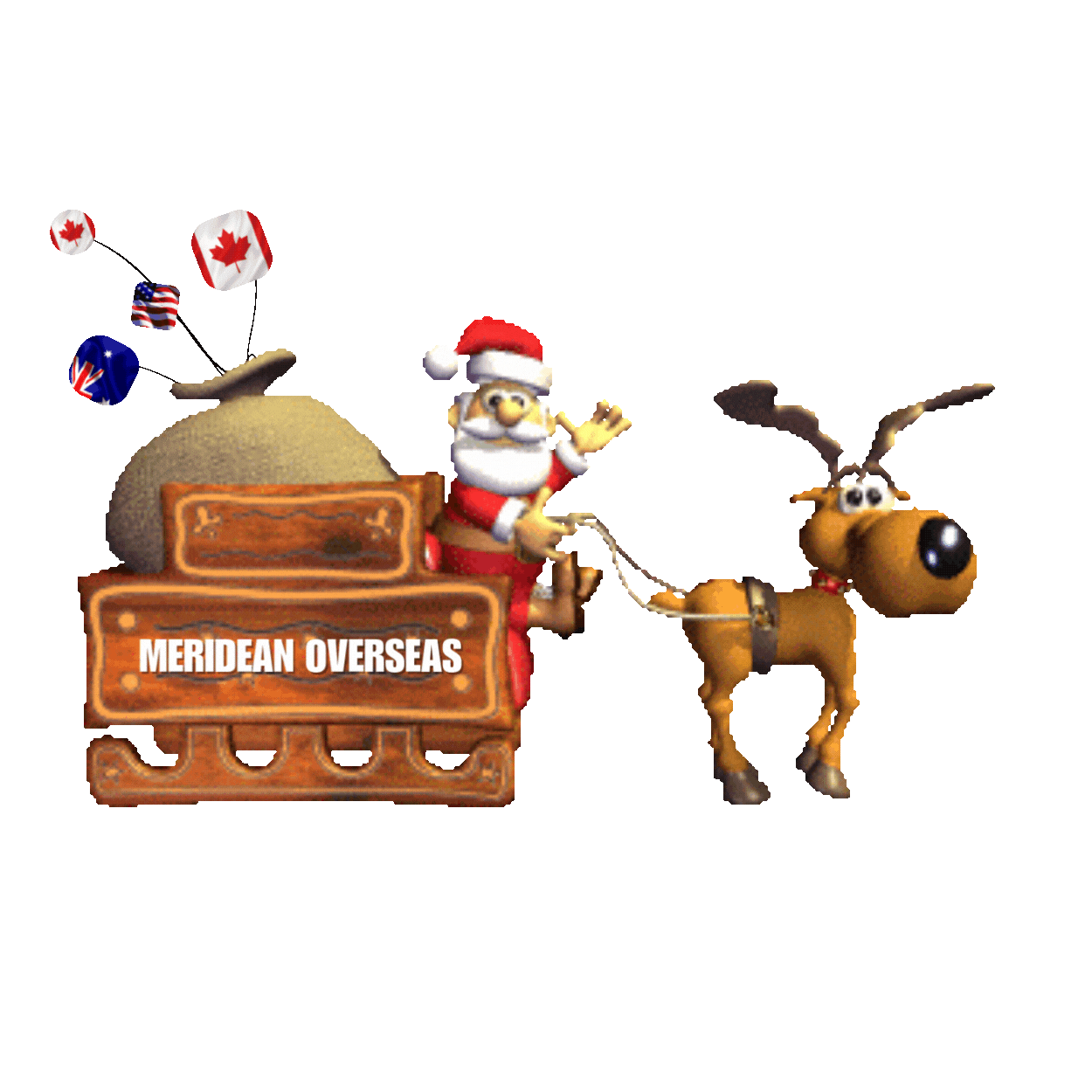
Meridean Overseas
Updated On 10 September 2024 & Read Time 13 minutes
1.7k
The IELTS reading section is the second module of the IELTS exam. However, you can always attempt the reading section after attempting all the sections of the IELTS exam: the listening, speaking, and writing sections. You have 60 minutes to read 3 text passages and answer 40 questions. So read them carefully, as you will not get extra time to transfer yours on the answer sheets.

In this blog, we've given an example of the “Bird Migration” reading passage for you to practise and improve your IELTS reading section score.
Table of Contents
Before starting the reading section, please remember to allocate at most 20 minutes to each passage, wherein you must read through the passage and answer the following questions.
Birds’ various distinctive design elements allow them to pull off such astounding endurance feats. They have hollow, light-weight bones, intricately patterned feathers that provide thrust and lift for swift flight, navigation systems that are far superior to those created by humans, and a clever heat-conserving structure that, among other things, emphasises all blood circulation below layers of warm, water-resistant plumage, making them capable of surviving in the harshest climates. Their respiratory systems must function effectively during prolonged altitude flights. Thus, they have an oxygen extraction system from their lungs that is significantly superior to that of any other mammal. Their bodies can build up significant amounts of fat throughout the later stages of the summer breeding period, when food is abundant, to give them enough energy for their lengthy migratory trips.
Finding enough food during the winter, when it is scarce, is the primary driver behind bird migration. This is especially true for birds that breed in the Northern Hemisphere’s temperate and arctic regions, where there is an abundance of food throughout the brief growing season. Many species must move when food is sparse since they can withstand frigid conditions if there is plenty of it. But intriguing issues still exist.
Many birds go farther than would be necessary only to locate food and favourable weather, which is a curious reality. Nobody is sure why British swallows don’t travel thousands of miles further to their preferred winter habitat in South Africa’s Cape Province, despite the fact that they could certainly make it through the winter in equatorial Africa. The huge migrations performed by shorebirds that breed close to the poles and arctic terns that hunt on mudflats are still unresolved. In general, migrating species spend their winters farther south, and the further north they breed. This requires an annual round trip of 25,000 kilometres for arctic terns. All of these individuals, however, fly over other regions of what appears to be ideal habitat spanning two hemispheres en route to their eventual destination in remote southern latitudes. Whilst we may not entirely comprehend the reasons why birds visit certain locations, we can nevertheless be in awe of their accomplishments.
One of the biggest mysteries is how young birds who don’t have parental supervision can find the typical wintering locations. Fewer people travel with young children, and occasionally, kids don’t even know what their parents seem like. The cuckoo, which lays its eggs in the nest of another species and never sees its young again, is a well-known example. It is incredible to think that after being nurtured by its host species, the young cuckoo migrates to its original tropical wintering habitats before returning alone to northern Europe the next season to seek a mate among its kind. The logical conclusion is that it receives from its parents an innate ability to navigate and find its way, as well as a mental image of another cuckoo. However, no one has the foggiest notion of how this is even conceivable.
There is growing proof that birds utilise the sun and stars’ positions as compass directions. Additionally, they appear to be able to sense the earth’s magnetic field, which is possible because their brains contain tiny magnetite crystals. However, accurate navigation also necessitates a sense of place and time, particularly when being lost. Birds can still quickly return to their nesting locations even after travelling thousands of kilometres over an alien terrain, according to experiments. Such extraordinary abilities are the result of the computation of a number of complex stimuli, such as an innate map of the night sky and the pull of the earth’s magnetic field. It is unknown how the birds employ their “instruments,” but one thing is certain: their sensory awareness of the environment is superior to ours. The majority of tiny birds migrate at night and follow the position of the setting sun. Nevertheless, in addition to witnessing the sunset, they also appear to see the plane of polarised light that it produces, which serves to calibrate their compass. Other advantages of nighttime travel exist. Predators who hunt during the daylight hours are avoided, and there is less of the probability of being dehydrated from extended flight under a hot, sunny sky. Additionally, the air is often calmer and cooler at night, which is perfect for stable, long-distance flights.
All journeys, however, carry a significant amount of danger, and leaving on time is a skill in itself for arriving safely. This calls for using precise weather forecasts and taking advantage of suitable winds. Birds are skilled at both, and laboratory experiments have revealed that some of them can even detect the slight variation in barometric pressure between the room’s floor and ceiling. Birds frequently respond to weather fluctuations before there is any outward evidence of them. Lapwings, which consume grassland, travel from the Netherlands to the British Isles, France, and Spain as a cold front approaches. The birds might go hungry if the ground freezes. However, they make their way back to Holland before a thaw because of a pressure change that predicted an improvement in the weather.
The day prior to the letter announcing its release, a Welsh Manx shearwater that had been transported to America and freed was found returned in its burrow on Skokholm Island off the coast of Pembrokeshire! On the other hand, every autumn, a few North American birds are carried across the Atlantic by swift, westerly tailwinds. They certainly made it to Europe without incident; however, there is compelling evidence that some of them returned to North America the following spring, having likely spent the winter with European migrants in warm African climates.
Get free IELTS Sample Papers to learn the type of questions asked in the IELTS (Speaking, writing, reading, and listening) section.
Download Now!Questions 1-7
The reading passage consists of seven paragraphs, numbered A to G. Select the relevant heading from the list of headings below for every paragraph. Write the correct number, I–X, in boxes 1–7 on the answer sheet.
List of Headings
The best moment to migrate.
The unexplained rejection of closer feeding ground.
The influence of weather on the migration route.
Physical characteristics that allow birds to migrate.
The main reason why birds migrate.
The best wintering grounds for birds.
Research findings on how birds migrate.
Successful migration despite the trouble of wind.
The contrast between long-distance migration and short-distance migration.
Mysterious migration despite lack of teaching.
Paragraph A
Paragraph B
Paragraph C
Paragraph D
Paragraph E
Paragraph F
Paragraph G
Questions 8-9
Select two alphabets from A to E. Write the right letters in boxes 8 and 9 on the answer sheet. Out of the following, which two statements on bird migration are true?
A. Birds frequently fly farther than necessary.
B. Birds that travel in families are secure.
C. Nighttime bird flying requires less water.
D. Compared to humans, birds have far sharper eyesight.
E. Only migratory birds can withstand heavy winds.
Questions 10-13
Fill in the following notes. For every answer, write no more than two words. Write the answer from 10 to 13 on your answer sheet.
10. How juvenile birds like cuckoos can locate their wintering sites without_________is a huge enigma.
11. There is proof that birds can determine directions like a ____________ by looking at the sun and stars.
12. One benefit of nighttime flying for birds is that they can avoid __________ contact with.
13. According to laboratory testing, birds can sense weather without the ___________ cues.
Also, Read: The Flavour of Pleasure - IELTS Reading Answers
Answers 1-7
IV
From: Paragraph A, They have hollow, light-weight bones, intricately patterned feathers that provide thrust and lift for swift flight, navigation systems that are far superior to those created by humans, and a clever heat-conserving structure that, among other things, emphasises all blood circulation below layers of warm, water-resistant plumage, making them capable of surviving in the harshest climates.
Explanation: The paragraph mentions that a bird's lightweight bones, feathers, navigational system, and structure that retains heat are the physical traits that enable them to migrate.
V
From: Paragraph B, Finding enough food during the winter, when it is scarce, is the primary driver behind bird migration.
Explanation: The text claims that finding enough food during the winter when it becomes scarce, is the primary cause of bird migration.
II
From: Paragraph C, Nobody is sure why British swallows don’t travel thousands of miles further to their preferred winter habitat in South Africa’s Cape Province, despite the fact that they could certainly make it through the winter in equatorial Africa.
Explanation: According to the passage, it is still being determined why British swallows and other migratory bird species decide against moving to closer feeding grounds throughout their migration. They can survive the winter in other equatorial locations but move further south during the winter.
X
From: Paragraph D, One of the biggest mysteries is how young birds who don’t have parental supervision can find the typical wintering locations. Fewer people travel with young children, and occasionally, kids don’t even know what their parents seem like.
Explanation: The paragraph discusses the enigma of how fledging birds manage to locate their usual wintering grounds without the assistance of their parents or other teachers. It is a fantastic phenomenon that these birds can move effectively even in the absence of supervision or expertise.
VII
From: Paragraph E, There is growing proof that birds utilise the sun and stars’ positions as compass directions. Additionally, they appear to be able to sense the earth’s magnetic field, which is possible because their brains contain tiny magnetite crystals.
Explanation: The paragraph states that there is mounting evidence that birds use the sun's and stars' positions as a compass to determine their direction. It also implies that birds are magnetically sensitive, which may be because of microscopic magnetite crystals in their brains. These results shed light on birds' ability to navigate during migration.
I
From: Paragraph F, Birds frequently respond to weather fluctuations before there is any outward evidence of them. Lapwings, which consume grassland, travel from the Netherlands to the British Isles, France, and Spain as a cold front approaches.
Explanation: Birds react to changes in the weather before anyone else does. When a cold front is approaching, lapwings have been seen to travel from the Netherlands to the British Isles, France, and Spain. Thus, it may be concluded that now is the ideal time for them to relocate.
VIII
From: Paragraph G, On the other hand, every autumn, a few North American birds are carried across the Atlantic by swift, westerly tailwinds. They certainly made it to Europe without incident; however, there is compelling evidence that some of them returned to North America the following spring, having likely spent the winter with European migrants in warm African climates.
Explanation: The paragraph illustrates the success and flexibility of bird migration by stating that some North American birds may migrate to Europe and then return to North America the following spring despite the challenges caused by the wind.
A
From: Paragraph C, Many birds go farther than would be necessary only to locate food and favourable weather, which is a curious reality.
Explanation: The argument leads one to the conclusion that birds frequently travel farther than is strictly necessary in search of food and favourable weather. Thus, the answer is A: "Birds often fly farther than necessary."
C
From: Paragraph E, Additionally, they appear to be able to sense the earth’s magnetic field, which is possible because their brains contain tiny magnetite crystals.
Explanation: It's fascinating that the chapter describes in graphic detail how birds fly farther than is necessary and that nighttime flying is ideal for steady, long-distance flight because the air is usually calmer and colder. It also emphasises how much less water is needed for nighttime bird flying, which is crucial for survival.
Parental Guidance
From: Paragraph D, One of the biggest mysteries is how young birds who don’t have parental supervision can find the typical wintering locations. Fewer people travel with young children, and occasionally, kids don’t even know what their parents seem like.
Explanation: It's remarkable how young birds, especially cuckoos, can find their wintering grounds independently without their parents' help. It's a natural marvel and a bit of a mystery. However, it can be challenging for young children to navigate the world without parental supervision and instruction, particularly when travelling to new places.
Compass
From: Paragraph E, There is growing proof that birds utilise the sun and stars’ positions as compass directions.
Explanation: Birds can navigate and orient themselves during migration by using the locations of the sun and stars as compass directions.
Predators
From: Paragraph E, Predators who hunt during the daylight hours are avoided, and there is less of the probability of being dehydrated from extended flight under a hot, sunny sky.
Explanation: According to the paragraph, birds' complex feathers, hollow bones, excellent navigational systems, and heat-conserving structures enable them to withstand lengthy flights and thrive in arid environments. The leading cause of bird migration is the inability to locate enough food during the winter.
Visible
From: Paragraph F, Birds frequently respond to weather fluctuations before there is any outward evidence of them.
Explanation: According to the paragraph, birds can detect changes in the weather before humans can see them. In experimental experiments, birds have also been shown to possess this ability.
Also, Read: Trees in Trouble IELTS Reading Answers
Embark and excel in your study abroad journey with our expert team!

In conclusion, by regularly practising different reading passage types, you can improve your understanding of the text and quickly read and answer all the questions, which would help you obtain an outstanding band score in the reading section.
We hope you found the blog informative. If you want to get further details or would like to prepare for IELTS, you may contact our expert counsellors at Meridean Overseas Education Consultants (MOEC). You can also take free online counselling through our website. Our expert counsellors will provide you with the best support and guidance you need for admission and visa. In addition, they will help you shortlist the universities according to your profile. For more information or any queries, contact application02@meridean.org or 1800-1230-00011.
Boost your IELTS score with effective practice using these sample papers.
Get Your Free Guide

Contact MOEC Experts for Study Abroad Guidance!
Contact MOEC Experts for Study Abroad Guidance!

